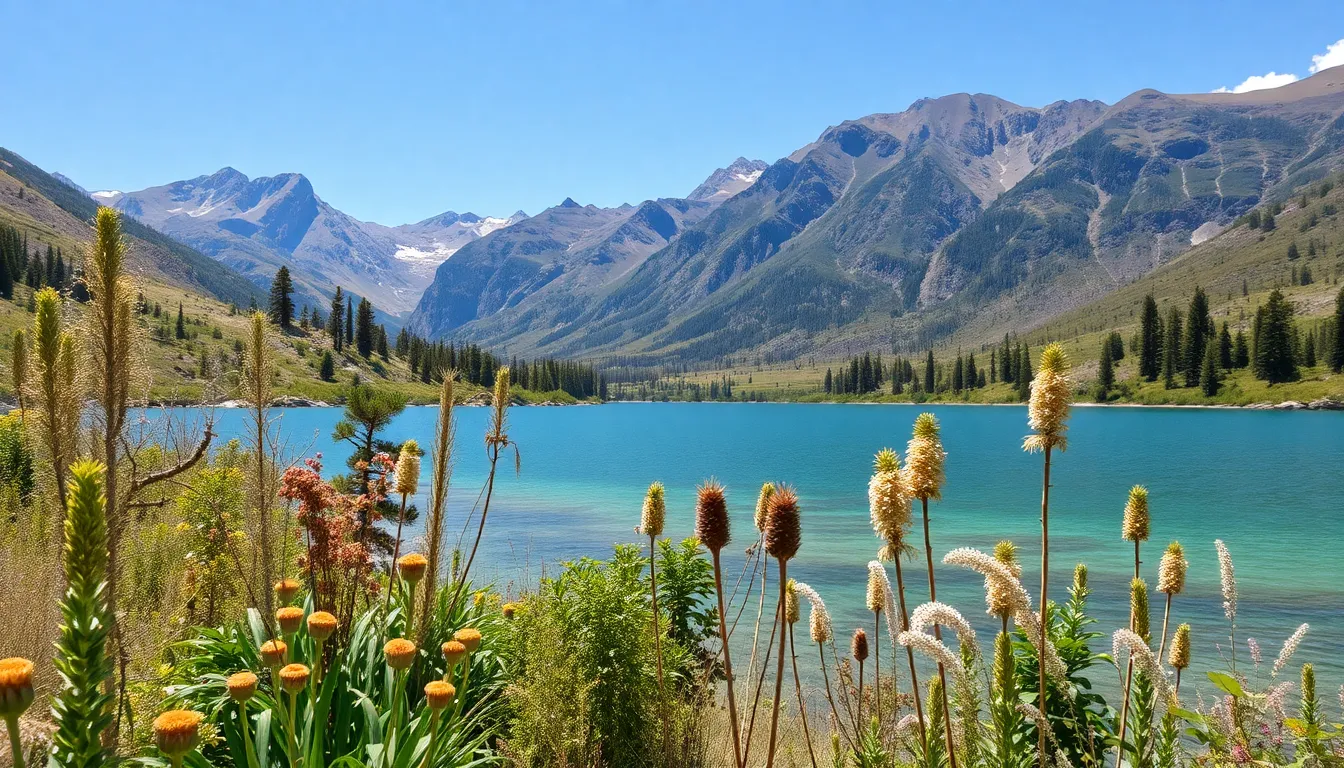Every living creature has a favorite hangout spot, and it’s not just because of the ambiance. Habitats play a crucial role in supporting life, providing everything from a cozy nook to the essentials for survival. But what exactly makes a habitat tick? Spoiler alert: it’s not just about having a nice view.
Table of Contents
ToggleOverview of Habitat Features
Habitats support various life forms, providing essential elements for survival. Location plays a crucial role in defining these environments, influencing climate and resource availability. Structure in a habitat offers shelter and nesting areas for species, enhancing their chances of reproduction and safety.
Resources within habitats impact the types of organisms that can thrive. Water sources, such as rivers or lakes, attract diverse wildlife. Vegetation also contributes by providing food and additional shelter, creating a balanced ecosystem.
Dynamic interactions within habitats maintain ecological balance. Predators, prey, and competition shape population dynamics, ensuring that species adapt over time. Biodiversity boosts resilience, allowing ecosystems to withstand changes and disturbances.
Microhabitats exist, offering unique conditions for specific organisms. These small environments, including forest floors or coral reefs, support specialized species adapted to distinct circumstances. Variability within habitats adds depth to the overall ecosystem.
Energy flow is a pivotal aspect of habitat functionality. Producers, like plants, convert sunlight into energy, fueling the entire food web. Decomposers recycle nutrients, ensuring sustainability within the habitat.
Understanding these five features—location, structure, resources, interactions, and energy flow—illuminates the complexity of habitats and their vital roles in supporting life.
Physical Features of Habitat

Physical features significantly influence habitats, shaping their capacity to support diverse life forms. Understanding these aspects is essential for grasping the complexities of ecosystems.
Climate and Weather Patterns
Climate and weather patterns directly affect habitat conditions. Temperature ranges, precipitation levels, and seasonal changes determine which species thrive in an area. A temperate climate fosters diverse plant and animal life, while arid climates support specially adapted organisms. Additionally, extreme weather events impact habitat stability, influencing food availability and shelter. Such environmental factors create specific niches, allowing certain species to flourish while others may decline.
Geographic Location
Geographic location determines a habitat’s biodiversity and ecosystem dynamics. Proximity to water bodies, elevation, and soil types contribute to the types of flora and fauna present. Coastal habitats, for instance, support marine species and coastal vegetation, while mountainous regions host unique species adapted to high altitudes. Accessibility to resources varies by location, greatly influencing species distribution and interactions within the habitat. Habitats located near urban areas often face added pressures, altering their ecological integrity and species composition.
Biological Features of Habitat
Biological features of habitats significantly influence their capability to support diverse life forms. Emphasis on flora and fauna diversity and ecological interactions reveals the complexity of these environments.
Flora and Fauna Diversity
Flora and fauna diversity represents the variety of plant and animal species present within a habitat. High diversity enhances ecosystem resilience, allowing habitats to withstand environmental changes. For instance, forests typically boast numerous tree species, shrubs, and ground cover plants. These plants provide food and shelter for various animal species, including insects, birds, and mammals. Grasslands contain distinct plant types that attract specific herbivores and predators, forming intricate food webs. Each habitat’s unique combination of species contributes to its overall ecological health and functionality, making diversity a critical feature.
Ecological Interactions
Ecological interactions encompass the relationships between different species within a habitat. Predation, competition, and mutualism exemplify these connections. Predators and prey maintain population balance, while competing species can influence resource availability. Mutualistic relationships, like those between pollinators and flowering plants, enhance reproductive success for both parties. These interactions shape the habitat’s structure and function. Over time, they establish complex networks that sustain life and promote stability in ecosystems. Understanding these ecological dynamics clarifies how species rely on one another for survival and fosters healthy habitats.
Chemical Features of Habitat
Chemical features of a habitat significantly influence its ecological dynamics. Soil composition and water quality act as critical determinants for vegetation and animal life.
Soil Composition
Soil composition encompasses minerals, organic matter, air, and moisture. It directly affects nutrient availability and supports various plant species. For instance, sandy soils drain quickly but may lack essential nutrients, favoring drought-tolerant plants. In contrast, clay soils retain water and nutrients, supporting lush vegetation. The pH level of soil also plays a role in determining which plants can thrive. Specific plants prefer acidic soils, while others thrive in alkaline conditions. Consequently, diverse soil types contribute to biodiversity and the overall health of the ecosystem.
Water Quality
Water quality defines the suitability of water sources for living organisms. Key indicators include pH, dissolved oxygen, and pollutant levels. Aquatic species thrive in clean water with balanced pH and sufficient oxygen. For example, streams with high oxygen levels support fish populations, while polluted waters lead to decreased biodiversity. Nutrient levels also impact aquatic ecosystems; excessive nutrients can cause algal blooms, harming fish and other aquatic life. Maintaining high water quality is crucial for sustaining ecosystems, showcasing the interconnectedness between land and water habitats.
Importance of Habitat Features
Habitats play a fundamental role in the survival of organisms, encompassing more than just aesthetic appeal. Essential features such as location and climate dictate the types of species that thrive in an area. Temperature and precipitation levels influence resource distribution, affecting biodiversity and ecosystem stability.
Structure within habitats offers necessary shelter and nesting areas, enhancing reproductive success and safety for various organisms. Physical features stimulate interactions among species, fostering complex ecological networks that maintain balance and resilience. Resource availability, including water and vegetation, determines the viability of different life forms.
Energy flow within a habitat sustains life, driving processes crucial for ecosystem functionality. High biodiversity serves as a buffer against environmental changes, allowing habitats to withstand threats, such as climate shifts. Specific interactions, including mutualism and competition, further illustrate the intricate relationships sustaining these environments.
Chemical characteristics like soil composition and water quality significantly impact habitats. Nutrient availability hinges on soil composition, facilitating growth for diverse plant species. Water quality acts as a determinant for aquatic life, where clean water supports healthy ecosystems.
Geographic factors, such as the proximity to water bodies and elevation, also influence the habitats’ biological dynamics. Coastal habitats showcase varied marine life, while mountainous regions support unique high-altitude species. Urban proximity introduces pressures that can alter ecological integrity, emphasizing the need for conservation efforts.
Understanding these features enhances awareness of habitats and their vital functions. Collectively, they provide a comprehensive view of the interconnectedness of ecosystems and the importance of preserving these natural environments.
Habitat features play a vital role in supporting life and maintaining ecological balance. By understanding the significance of location, climate, structure, resource availability, and ecological interactions, one gains insight into the complexities of ecosystems. The interplay among these factors not only determines which species thrive but also influences the overall health of the environment.
Recognizing the importance of biodiversity and energy flow helps underscore the need for conservation efforts. Protecting habitats ensures the survival of countless organisms and the stability of ecosystems. By valuing these natural environments, society can work towards a sustainable future that benefits both wildlife and humans alike.










